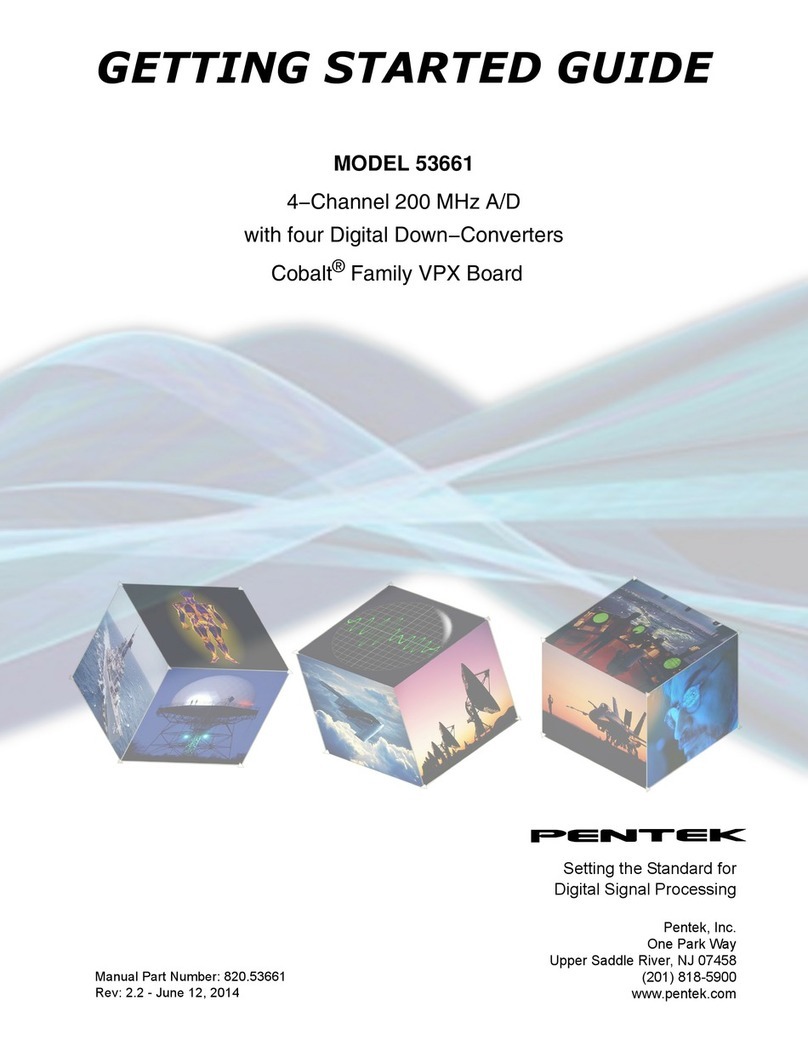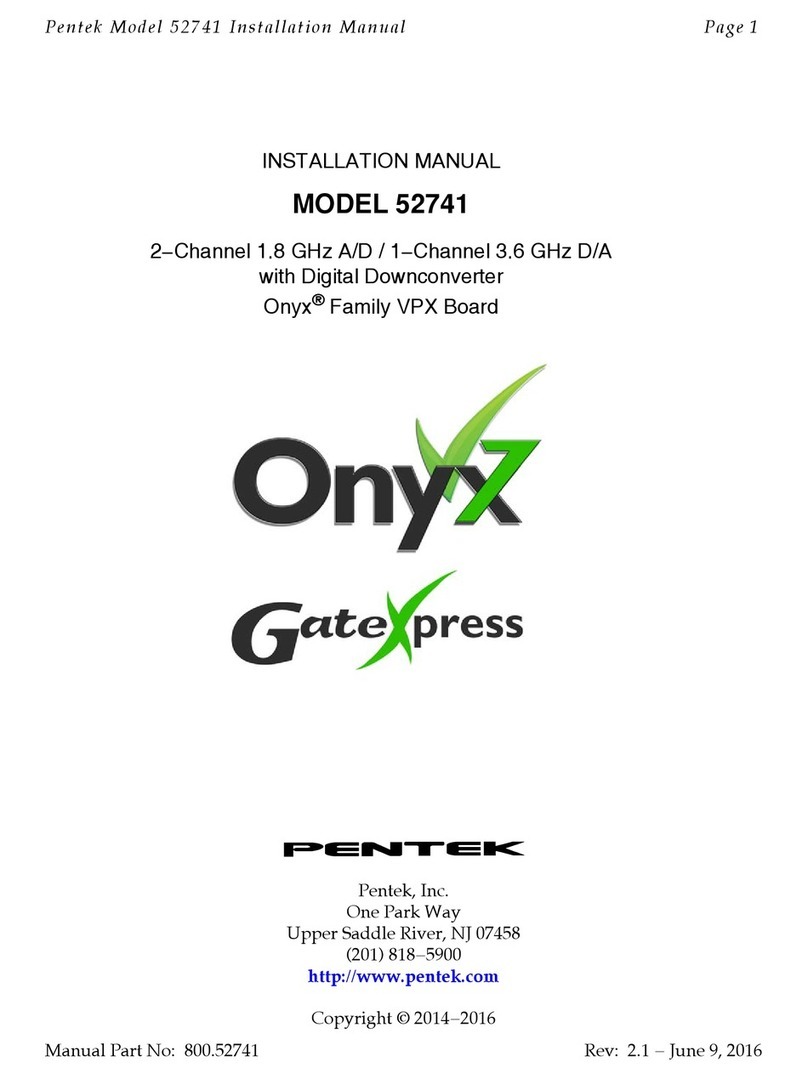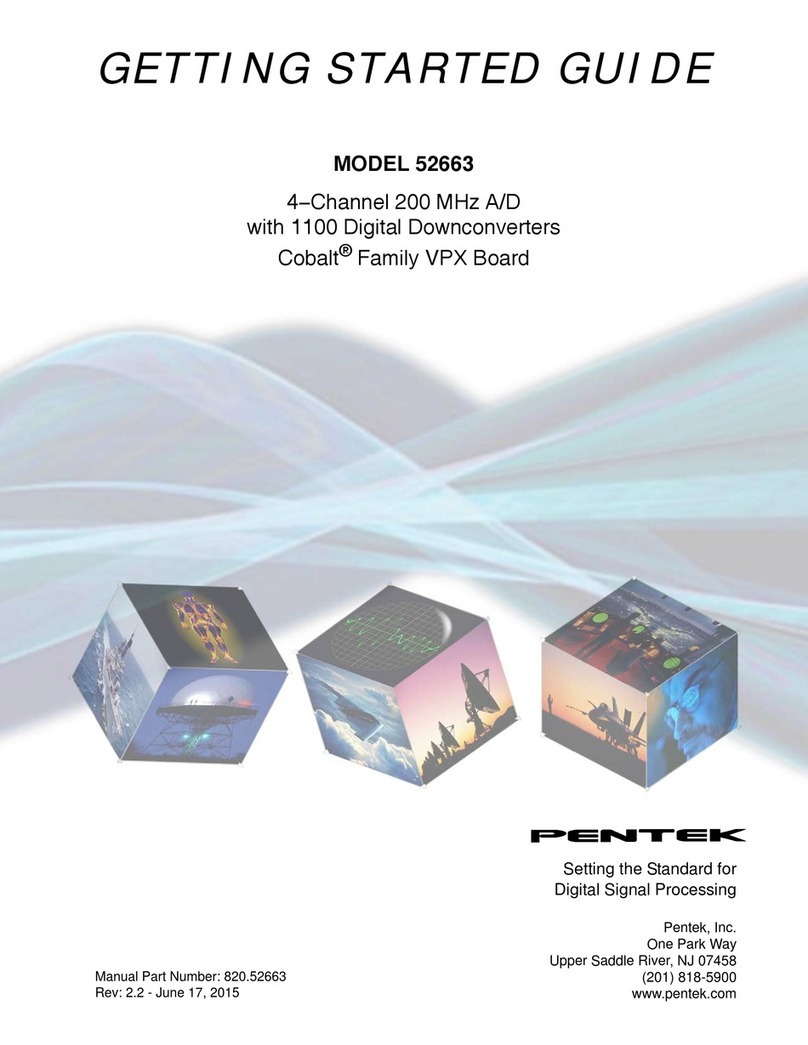
Pentek Model 6470 Technical Description
Preselector Lowpass Filter
Forapplicationswheretheentiresignalprocess-
ing bandwidth of the digitizer is not required,
the user can select one of three different second
order lowpass filter sections to reject out-of-
band interference and improve the dynamic
range of the system. Currently the user can
choose 2 MHz, 5 MHz, 12 MHz or no filtering
under software control.
Preselector Highpass Filter
As in the case of the lowpass selections de-
scribed above, the user can choose one of three
different second order highpass filter sections
under software control to reject out-of-band in-
terference. Standard cutoff frequencies are 3
MHz, 8 MHz, 18 MHz, or no filtering.
Programmable Gain Amplifier
The Model 6470 includes a two stage amplifier
with software programmable gain and offset
trim. Each stage follows one of the preselector
sections and provides 40 dB of gain variation.
Normally, it is advantageous to achieve most
ofthetotalgainneededinthefirststagetomaxi-
mize the signal-to-noise ratio. The gain of the
second stage is then set to fully utilize the dy-
namic range of the analog to digital converter.
Voltagecontrolled amplifiers are employed that
are driven by D/A converters. In addition, D/A
converters are provided to remove offset volt-
ages.
Technical Overview
The Pentek Model 6470 is a complete 6U VME
wideband data acquisition front end designed
primarily for high frequency digital receiver
applications.TheModel6470includesapream-
plifier, preselector, programmable gain ampli-
fiers, antialias filter, and a 10 bit 70 MSPS ana-
log to digital converter. All of these functions
are controlled from the VME bus. The digital
data output from the AID converter is available
on the front panel in a number of different for-
mats through the use of one of several mezza-
nineboards that provide electrical and mechani-
calcompatibility with other system components.
The current interface mezzanine boards are de-
signed to provide compatibility with the Pentek
Model 4271 Digital Drop Receiver. Pentek also
offers a similar product, the Model 6425, that
will operate at up to 25 MSPS at 12 bit resolu-
tion. The Model 6425 is be compatible with the
Model 6470 for applications that require lower
bandwidth and can increased dynamic range.
Preamplifier
Thepreamplifier terminates theinputin 50 ohms
andprovides selectable AC or DC coupling with
a fixed gain of two. In addition, the preampli-
fier can be disconnected from the input connec-
tor under software control while maintaining a
50 ohm termination of the input connector. This
feature is useful during automatic setup of gain
and amplifier offsets.






























